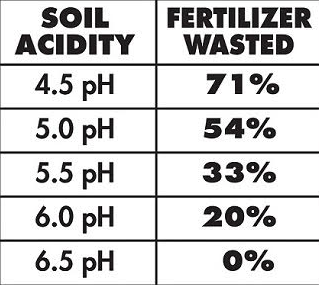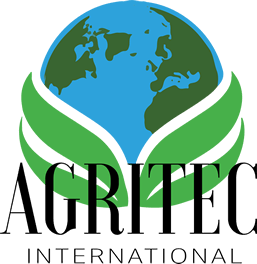One of the biggest misunderstandings surrounding our liquid fertilizers is in affordability, soil life, and effectiveness. Unlike other liquid fertilizers and amendments, AgriTec’s liquid products are bio-boosted. Here’s a breakdown of the benefits of liquid fertilizer and amendments versus granular treatments.
Affordability & Effectiveness
AgriTec’s liquid products are, on average, about 50% cheaper than when compared to granular treatments. This is amplified when considering the fertilizer loss that happens with granular treatments.
Michigan State University performed 30 years of research on the effects of liquid fertilizer and granular fertilizer. They found that only 20% of granular fertilizer makes it into the plant. In contrast, 95% of foliar liquid fertilizers make it into the plant. There will be 4.5 times more nutrients available to the plant in 100lbs of liquid than 100lbs of the same analysis in a dry fertilizer material.
Six gallons per acre of a 10-20-10 liquid plant food weighing 11.4 pounds per gallon will weigh about 68 pounds. Assuming an availability of 90%, the plant would receive about 61 pounds of fertilizer per acre. Further breaking this down in terms of N, P, and K, the plant should receive and use 6.1 pounds of nitrogen (10% N), 12.2 pounds of phosphorus (20% P), and 6.1 pounds of potash (10% K).
As noted from the above calculations, six gallons of liquid fertilizer would provide as much nutrition to the plant as 300 pounds of dry fertilizer.
“We apply fertilizer nutrient materials to the above ground growing portion of the plant. We have seen that materials are absorbed by the plant and move rather freely in the plant. The amounts may at first seem relatively small, but to offset this handicap, the efficiency is high. In fact, this is the most efficient method of applying fertilizer to the plants that we have yet discovered.”
“If we apply these materials to the leaves in soluble forms, as much as 95% of what is applied may be used by the plant. If we apply a similar amount to the soil, we find about 10% of it to be used.” Dr. H. B. Tukey, Head of Department of Horticulture at Michigan State University
Dry granular fertilizers are using less costly raw materials that are toxic to the plant and must be applied to the soil, which in turn gives it over to the plant. Normally, much efficiency is lost in the process due to weather conditions and the chemical make up of the soil tending to “tie-up” nutrients. As a result, nearly all the universities have found the availability of dry fertilizers to average between 10 and 20%.
Fertilizer waste increases as soil becomes more acidic. Products like Pro-Cal work to neutralize soil acidity by displacing hydrogen with calcium, allowing even more nutrients to be delivered directly to the plant. While lime is traditionally applied to the soil to supply needed calcium and raise pH levels, new research by several of the top ag universities have shown that this method is not the efficient way to supply calcium to the soil. The old method is slow, taking months for the lime to break down and release calcium into the soil. Many times, the lime being applied will never fully supply the soil with calcium it needs in order to adjust soil pH to desired levels. Liquid calcium works faster and more efficiently than lime, because with liquid calcium, the nutrient has been purified and separated from the substances such as rock that have no effect on soil pH.

AgriTec International has engineered bio-activated liquid calcium, which is proven to neutralize soil acidity and raise pH, increase NPK movement into the plant, reduce soil compaction, increase root development and strengthen cell wall structure. When treating a field, liquid calcium should be the first step. Before fertilizer is applied or seed is planted, it is important to prepare the soil. 95% of soil naturally has a low soil pH. Low pH leads to lost fertilizer, bound up nutrients, slowed growth, and dramatically decreased or lack of production. By raising soil pH, you ensure that your plant gets the most out of the soil, you have thick, full growth, and money isn’t lost by being bound up in the soil. Bio-Activated liquid calcium will not only raise soil pH immediately while using the same nutrients as lime, but maintains that neutral state to ensure effective growing seasons in the future.
Soil Life
The other benefit to liquid fertilizers and amendments is in soil life. A common misconception is that liquid fertilizer and amendments don’t last as long as granular, causing more frequent treatments. When it comes to AgriTec’s products, this isn’t true. Pro-Cal, a soil amendment used to neutralize soil pH and increase calcium saturation, has a soil life of 2 to 4 years. Our liquid fertilizers each have a long-lasting soil life, ensuring the best yield for crops.
Agricenter Research Trials
In the fall of 2021, AgriTec was approached by Agricenter out of Memphis, TN to run trials on our products. The trials were led by Bruce Kirksey at Agricenter and Jonathan Barrett at AgriTec. The trials were conducted on 5 different plots with one control plot. All plots started with a pH of 5.4.
Trial Date: 11/17/2021 to 6/21/22
Application Rates
Control Plot:
Applied: 80 units of Nitrogen per acre
pH: 5.4
Plot 1:
Applied: 5 gallons per acre Pro-Cal
pH: 5.9
Yield: 88.1 bushels avg.
Plot 2:
Applied: 5 gallons per acre Pro-Cal, 1/2 gallon Form-14
pH: 6.3
Yield: 88.1 bushels avg.
Plot 3:
Applied: 5 gallons per acre Pro-Cal, 3 gallons Nitro-Maxx+
pH: 6.5
Yield 88.6 bushels avg.
Plot 4
Applied: 5 gallons per acre Pro-Cal, 7 gallons of 3-18-18+
pH: 6.3
Yield: 93 bushels avg.
Plot 5:
Applied: 5 gallons per acre Pro-Cal, 1/2 gallons Form-14, 3 gallons Nitro-Maxx+, 7 gallons of 3-18-18+, 14 ounces Aerate
pH: 6.4
Yield: 98 bushels avg.
The soil on these plots started with a higher concentration of nitrogen, which is why little was applied during application. Each plot had four sections that had individual yields. What you see above is the average between those four sections. Plot 5 had an average yield of 98 bushels, but the highest yield in that section was 104 bushels. According to the USDA, the national average for winter wheat in 2021 was 47.9 bushels per acre. With the right application of nutrients, AgriTec, with the full program, was able to double the yield of the national average.
Liquid fertilizer seems the obvious choice, especially considering that only 20% of granular fertilizers make it to the plant. AgriTec’s liquid fertilizers and soil amendments can all be applied through any standard ground or aerial application equipment and through any standard irrigation or fertigation systems. Bio-activated liquid calcium can also be mixed with most herbicides, pesticides, fungicides, and liquid fertilizers.


